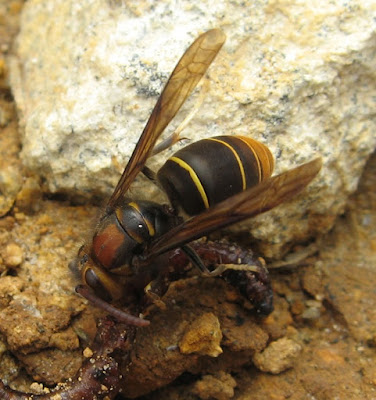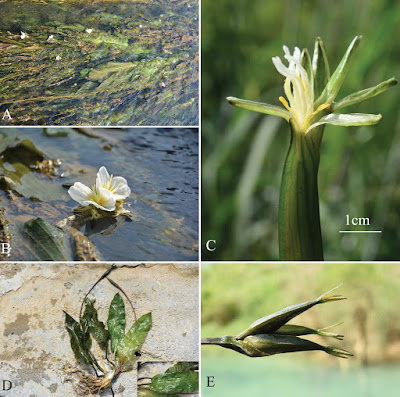[Most Recent Entries] [Calendar View]
Thursday, October 31st, 2019
| Time | Event | ||||
| 4:22a | [Mammalogy • 2019] Rhinolophus andamanensis • Integrated Approaches to Identifying Cryptic Bat Species in Areas of High Endemism
Abstract The diversity of bats worldwide includes large numbers of cryptic species, partly because divergence in acoustic traits such as echolocation calls are under stronger selection than differences in visual appearance in these nocturnal mammals. Island faunas often contain disproportionate numbers of endemic species, and hence we might expect cryptic, endemic species to be discovered relatively frequently in bats inhabiting islands. Species are best defined when multiple lines of evidence supports their diagnosis. Here we use morphometric, acoustic, and molecular phylogenetic data to show that a horseshoe bat in the Andaman Islands is distinct in all three aspects, supporting its status as a distinct species. We recommend investigation into possible new and endemic bat species on islands by using integrated approaches that provide independent lines of evidence for taxonomic distinctiveness. We provide a formal redescription of the taxon newly raised to species level, Rhinolophus andamanensis Dobson, 1872. Rhinolophus andamanensis Dobson, 1872 Homfray’s Horseshoe Bat. Holotype: Rhinolophus andamanensis ZSI Reg. No. 15561, male, collected from South Andaman Island, Andaman Islands, India, 1872, by J. Homfray; specimen, and skull (damaged). Diagnosis: A medium-sized bat with a forearm length ranging between 46.7–56.6mm. Ears tall and broad, with well-developed antitragus, tragus absent (Fig 4A). Horseshoe is broad and covers the whole of the muzzle, supplementary leaflet distinct; three mental grooves are observed on the lower lip (Fig 4B). When viewed frontally, sella is narrow above and wider below (Fig 4B). Superior connecting process bluntly rounded off, inferior surface slightly bent, inferior extremity curved downward (Fig 4C). Sella roughly half the length of the lancet. Lancet narrow, triangular and tapered to a point; has three distinct cells (Fig 4B). Skull robust with a condylocanine length of 21.97±0.53mm. The maxillary toothrow (cm3) measures 9.85±0.30mm. pm2 is small but in the toothrow. pm2 is in the toothrow, and is half the height of pm4 and one third the height of the canine. Baculum narrow and long, base distinctly trilobed, the shaft curving gently when viewed laterally. Ecology: Little is known about the ecology of this species. Large colonies were found in limestone caves, forest caves, and sometimes in holes and hollows of large trees. It cohabits with Rhinolophus cognatus, Hipposideros diadema masoni, H. gentilis, H. grandis, and Myotis horsfieldii. Distribution: Rhinolophus andamanensis is endemic to the Andaman Islands. It is distributed throughout the Andaman Archipelago—from North Andaman to Little Andaman. Chelmala Srinivasulu, Aditya Srinivasulu, Bhargavi Srinivasulu and Gareth Jones. 2019. Integrated Approaches to Identifying Cryptic Bat Species in Areas of High Endemism: The Case of Rhinolophus andamanensis in the Andaman Islands. PLoS ONE. 14(10): e0213562. DOI: 10.1371/journal.pone.0213562 | ||||
| 6:32a | [Entomology • 2019] Taxonomic Review and Distribution of the Genus Vespula Thomson, 1869 (Hymenoptera: Vespidae: Vespinae) from Vietnam
Abstract A taxonomic review of the genus Vespula Thomson in Vietnam is reported. Three species are recorded: V. flaviceps (Smith, 1870), V. koreensis (Radoszkowski, 1887), and V. orbata (Buysson, 1902). Of these, V. flaviceps is newly recorded from Vietnam. Distribution records of all three species and an identification key to species based on morphological characters are presented. Vespula koreensis is distributed from high (Cao Bang, Vinh Phuc, Quang Tri) to lower areas (Thai Nguyen, Tuyen Quang, Lang Son, Bac Giang), while the other two species are distributed in high mountainous areas of the northern and central regions of Vietnam such as in Cao Bang, Lao Cai, Son La, Phu Tho, Vinh Phuc, Quang Tri and Quang Nam provinces. Keywords: Hymenoptera, Social Wasps, Yellow Jackets, Vespula, Taxonomy, Vietnam
Lien Thi Phuong Nguyen, Thuong Thi Vu, Anthony Daglio and Bogdan Wiśniowski. 2019. Taxonomic Review and Distribution of the Genus Vespula Thomson, 1869 (Hymenoptera: Vespidae: Vespinae) from Vietnam. Zootaxa. 4691(3); 279–285. DOI: 10.11646/zootaxa.4691.3.8 | ||||
| 10:00a | [Botany • 2019] Ottelia fengshanensis (Hydrocharitaceae) • A New Bisexual Species of Ottelia from southwestern China
Abstract Ottelia fengshanensis, a new species (Hydrocharitaceae) from southwest China is here described and illustrated. Comparing its morphological features to putative close relatives O. guanyangensis, it has 3–4 flowers (vs. 2–5) each spathe, hexagonal-cylindric fruit, white styles (vs. yellow), green leaves (vs. dark green) and fruit tiny winged (vs. winged obviously). Molecular phylogenetic investigation of four DNA sequences (ITS, rbcL, trnK5’ intron and trnS-trnG) and the Poisson Tree Processes model for species delimitation (PTP) analysis, further resolves O. fengshanensis as a new species that is close to O. guanyangensis with distinct support. Keywords: karst, bisexual flowers, molecular phylogeny
Ottelia fengshanensis Z.Z.Li, S.Wu & Q.F.Wang, sp. nov. Description: The new species is similar to Ottelia guanyangensis in having bisexual flowers, three stamens, but differs through having (3)-4 flowers in each spathe (vs. 2–5), white styles (vs. yellow), green leaves (vs. dark green) and by fruits which are tiny winged (vs. obviously winged). Distribution and habitat: Ottelia fengshanensis is known from a single population in Fengshan County, Guangxi Province, China. The species inhabits a karst river less than 1.5 m in depth. Due to the complex underground river system in the karst region, it is probable that the species occurs in nearby areas as well. Etymology: The epithet is derived from the name of Fengshan County, which is the only known locality of occurrence. Zhi-Zhong Li, Shuang Wu, Chun-Yu Zhou, Yan Liu, Guang-Wan Hu, Samuli Lehtonen, Qing-Feng Wang and Jin-Ming Chen. 2019. Ottelia fengshanensis, A New Bisexual Species of Ottelia (Hydrocharitaceae) from southwestern China. PhytoKeys. 135: 1-10. DOI: 10.3897/phytokeys.135.38531 |
| << Previous Day |
2019/10/31 [Calendar] |
Next Day >> |






